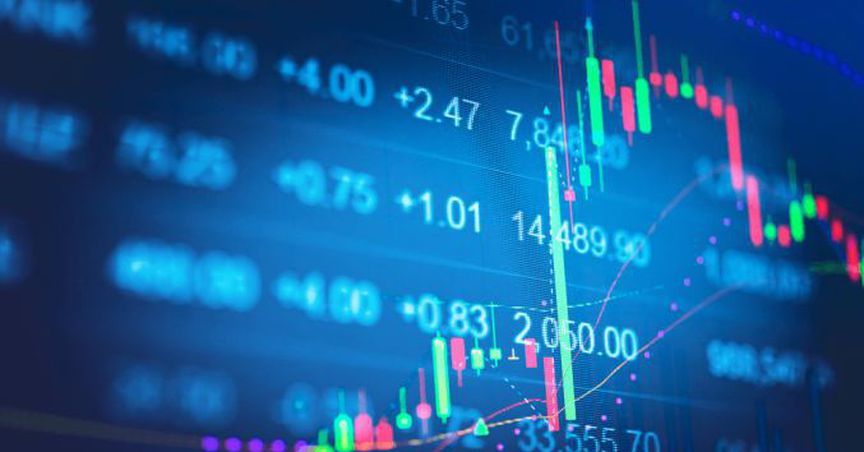From the early 1990s, the emerging market grew at breath-taking speed all over the world, as they tried to catch-up with the developed world, lifting hundreds of millions of people out of poverty and into the consuming classes. This all was possible because of globalisation, the source of envy for many populist leaders in the western world, which meant the rise of global supply chains and increased cross-border trade, offering new opportunities to local and foreign companies. Investment in infrastructure, including factories, roads and ports was made, which kept the momentum going and in turn fuelled the commodities book of the early 21st century. As developing countries offered better returns and faster growth, they became a vital part of portfolios for many investors.
However, seasoned investors and market experts were aware that these markets are full of regular turbulence as the political risk has always accompanied the prospect of fast economic growth. Recently, investors were reminded of this when the departure of two highly respected government officials came to news, both held an important position in the financial industry of their respective countries. First, Murat Cetinkaya, governor of the central bank of Turkey, was sacked on 6 July 2019 without an official reason. He was followed by Carlos Urzúa, the finance minister of Mexico, who resigned on the complaints of interference by unqualified officials and was considered a moderate figure in the volatile government of López Obrador, the Mexican president.
As analysts feared for the ability of borrowers in both countries to repay their debts and doubts crept about the economic growth, investors were startled, and the Mexican peso and Turkish lira fell more than 2 per cent against the US dollar. This served as a harsh reminder of the high-risk nature of investing in developing markets as when markets shake; the lucrative returns are outdone by the possibility of losses. A part of the core rationale for investing in the emerging markets is changing as calculations shows that the growth potential of this asset class is diming, disturbing the risk-return trade-off.
For most of the past decade, while US stocks have more than doubled in value, emerging market stocks had stagnated, in contrast to the earlier period when the benchmark MSCI Emerging Markets equities tended to outperform the S&P 500 by a wide margin. Investors were interested in the risky market during the period of hyper-globalisation, which was accompanied by high commodity prices. But now globalisation seems to be in danger as global supply chains are being disrupted due to political impediments to trade and commodity prices look nowhere near their previous highs. Many investors are doubting the utility of emerging markets in a diversified portfolio as catalysts to growth in developing countries seems to fade.
In the new world of populism, the idea that corporations can shift their manufacturing hubs from the United States in an emerging market and still serve it is not so certain, as repeated time and again by President Trump. He has censured countries like India, Vietnam and others for having easy access to the American market and enacting high tariff on American goods. Recently, the Trump administration scrapped trade privileges under the Generalised System of Preferences (GSP) for India, accusing India of being a high-tariff country that limits access to its gigantic market. Before G20 summit in Osaka last month, he also called Vietnam, the single worst abuser of everybody for its trade policy.
Over the past two decades, a lot of companies moved to developing countries in search of wage differentials, but now companies have started reallocating resources around the developing world. This is evident from the latest report by the Institute for International Finance which found that Foreign direct investment in emerging markets fell to just 2 per cent of gross domestic product across emerging and frontier markets last year, against the peak of 4.4 per cent in 2007 and to its lowest level since the 1990s. This came at a time when growth in global trade is also looking to pause and could further impact the stuttering economic growth in emerging markets.
Differentials between economic growth in emerging markets and the developed world have fallen from 6.1 percentage points in 2009 to just 2.3 points last year, indicating a systematic fall of the growth differential of emerging markets and advanced markets. Many experts reckon that there is a strong correlation between FDI inflows into emerging markets and the growth differential and is emerging markets have become relatively less dynamic and profitable, it made sense as they receive less investment. Emerging markets, excluding India and China, have been growing more slowly than developed economies since 2015, as developing market economies have been falling behind expectations for several years.
A lot of this can be attributed to disappointing productivity gains. According to experts, not much improvement in productivity in the large emerging markets has been seen in recent years and, excluding China, the contribution of productivity to output growth in Emerging markets has been no greater than in developed markets. While China invested much more and grew much faster, a big challenge for emerging markets is to increase the ratio of investment to GDP. Growth in the developing world is attributed to demographics and investment and not productivity. But investment has also now lagged, despite an increasing population, further straining productivity.
The importance of the growth of the Chinese economy to drive the asset class is not doubted by anyone. But recent data suggests that the country is going through a slowdown, which was exacerbated by US-China trade war. The country posted its lowest level of gross domestic product growth for nearly 30 years, as GDP growth fell to 6.2 per cent in the second quarter of this year, though consumption looked resilient. But economists are increasingly tensed about how long strong growth in domestic demand can last as the impact on corporate confidence due to the trade war has been bad, resulting in fall in capital expenditure. Consumer spending might also be affected if the job market faces pressure. Moreover, investment is now moving towards services and other less commodity-intense activities, and its growth has become more independent of imports from other developing countries. Non-financial-sector debt has ballooned to about 235 per cent of GDP at the end of 2016 from about 135 per cent of GDP before the global financial crisis, posing a potential risk to the economic stability of the country. Moreover, the credit dependency of the country is now as strong as ever, if not more, but credit is losing its power to drive growth, adding a challenge to drive economic growth.
Another thaw in the growth trajectory has been the strengthening of the dollar after the US Federal Reserve began to tighten its monetary policy after a post-crisis decade of expansion. The pricier dollar has meant that external borrowing has been costly, and the governments have not been able to take advantage of the expansionary monetary policy undertaken by central banks around the world. But now that seems to change as Fed recently signalled its willingness to cut rates again amid signs of economic weakness, though this serves as a double-edged sword, as lower economic growth means lower demand for exports from developing countries. Moreover, this might not necessarily mean cheaper dollar as investors tend to prefer the comparative safety of dollar assets in times of impending global economic slowdown.
Now, unlike the taper-tantrum of 2013, when the Fed decided to reduce its balance sheet which resulted in an outflow from emerging markets, emerging markets tends to face Trump-tantrum, which until now has seemed much worse. Erratic trade policy undertaken by the US president has roiled markets around the world, as he seems determined to fix the seemingly âlossâ the country has been facing due to their trade deficit. He has threatened to classify many countries as a currency manipulator and has caused geopolitical tension. The crisis with Iran is at the risk of escalating, which might cause the oil prices to shoot up, further straining the budget of emerging economies and risking the global economic growth. Moreover, emerging market equities fall more when developed world equities tumble, and any military dispute would be nothing but catastrophic for the world, and consequently for the emerging markets.
Still things cannot be called that bad, the odds on the Fed cutting rates more than once this year are improving as there are further signs that global economic growth is flagging, as the trade war escalates. Moreover, Trump would be eager to seal a deal before re-election in 2020. The Chinese government has intervened in the economy with stimulus measures to counter the slowdown, as leaders in Beijing will resort to more debt-fuelled stimulus through to the end of 2019. Shifting pattern of globalisation has come as a boon for some countries, as many companies are looking to set up a manufacturing hub in Emerging Markets in search of cheaper labour and to avoid the Trump administrationâs import tariffs. In the long run this demographic factor along with improving technology will help the Emerging Markets.





